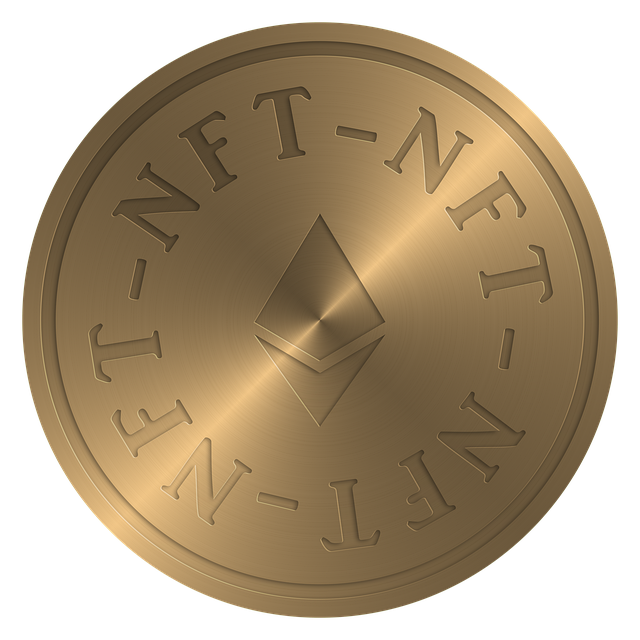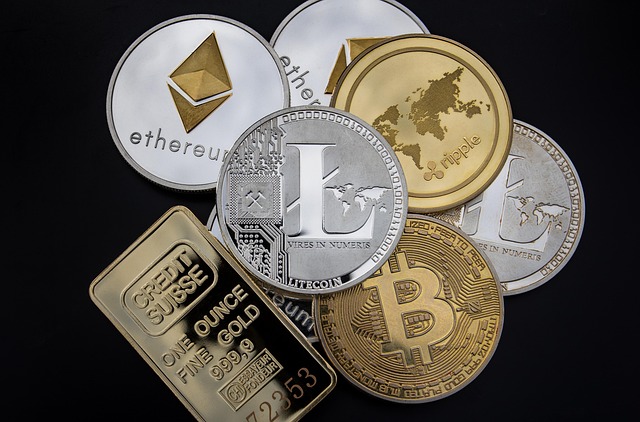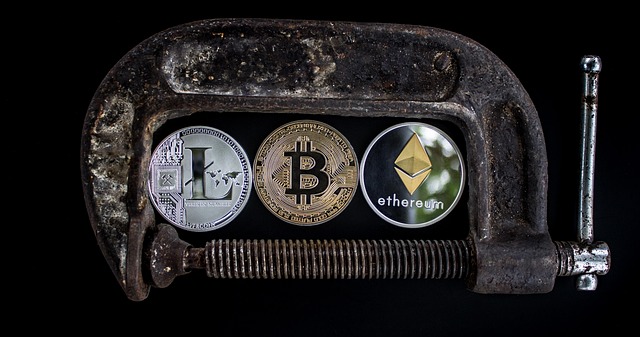
Ethereum-based Decentralized Finance (DeFi) is transforming traditional banking with peer-to-peer transactions, smart contracts, and a transparent network. The Ethereum ecosystem has become a hub for DeFi innovation, featuring decentralized exchanges, lending platforms, and yield farming opportunities. Smart contracts automate financial agreements, while scalability solutions like Layer 2 networks enhance accessibility. Despite risks like smart contract vulnerabilities and regulatory uncertainty, Ethereum's strong community is driving advancements in security and clarity. Future trends include stablecoins, cross-chain interoperability, and seamless integration with traditional finance, positioning DeFi for global adoption on the Ethereum blockchain.
“Discover the dynamic world of Decentralized Finance (DeFi) on Ethereum, a revolutionary force shaping the future of finance. This article explores the trends and innovations driving DeFi’s growth, from key developments to groundbreaking applications. We delve into the risks and challenges, including regulatory concerns and smart contract vulnerabilities, while highlighting the platform’s potential. By examining Ethereum-based DeFi, readers will gain insights into the current landscape and predict the ecosystem’s evolution.”
- Understanding Decentralized Finance (DeFi) on Ethereum
- Key Trends Shaping the DeFi Ecosystem on Ethereum
- Innovations and Breakthroughs in Ethereum-Based DeFi
- Navigating Risks and Challenges in DeFi on Ethereum
- The Future of Decentralized Finance on Ethereum
Understanding Decentralized Finance (DeFi) on Ethereum

Decentralized Finance, or DeFi, has emerged as a revolutionary concept in the financial realm, and Ethereum is at its forefront. This innovative technology allows for peer-to-peer transactions and access to various financial services without traditional intermediaries like banks. On Ethereum, a decentralized blockchain network, DeFi has gained immense popularity due to its smart contract functionality. These contracts automatically execute agreements between users, ensuring transparent and secure operations.
The allure of Ethereum-based DeFi lies in its ability to provide lending, borrowing, trading, and other financial tools while maintaining complete decentralization. Users can participate in these activities by staking their cryptocurrencies as collateral, earning rewards, or providing liquidity to decentralized exchanges. As a result, Ethereum has become a vibrant ecosystem where users can explore new financial opportunities and experience greater control over their assets in a transparent and open environment.
Key Trends Shaping the DeFi Ecosystem on Ethereum

The decentralized finance (DeFi) ecosystem on Ethereum has been a dynamic and rapidly evolving space, with several key trends driving its growth and transformation. One of the most prominent trends is the increasing adoption of smart contracts, which form the backbone of DeFi applications. These self-executing contracts enable secure and transparent financial transactions without the need for intermediaries. As a result, Ethereum’s robust smart contract platform has attracted a vast number of developers and users, fostering innovation and creating a vibrant ecosystem.
Another significant trend is the rise of decentralized exchanges (DEXs) and lending platforms. Ethereum-based DEXs allow users to trade cryptocurrencies directly from their wallets, eliminating the need for centralized exchanges. This trend promotes financial inclusion and empowers users with greater control over their assets. Furthermore, decentralized lending protocols have gained traction, offering attractive interest rates and providing borrowers with access to liquidity without traditional credit checks. These innovations are reshaping the financial landscape, making Ethereum a leading platform in the DeFi revolution.
Innovations and Breakthroughs in Ethereum-Based DeFi

Ethereum has emerged as a leading platform for decentralized finance (DeFi), driving innovations that are reshaping the financial landscape. One of the key breakthroughs is the development of smart contracts, which enable automated and transparent execution of financial agreements without the need for intermediaries. This has facilitated the creation of various DeFi applications, including lending protocols, decentralized exchanges, and yield farming platforms.
Additionally, Ethereum’s scalability solutions like Layer 2 networks and state channels have significantly enhanced transaction speeds and reduced fees, making it more accessible for users to participate in DeFi activities. These advancements have attracted a massive influx of developers and investors, fueling further growth and experimentation in the DeFi space on the ethereum blockchain.
Navigating Risks and Challenges in DeFi on Ethereum

Navigating the complex landscape of Decentralized Finance (DeFi) on Ethereum requires a nuanced understanding of its unique risks and challenges. One significant concern is smart contract vulnerabilities, which have historically led to substantial financial losses for users. As DeFi applications become increasingly sophisticated, ensuring robust security measures is paramount. The decentralized nature of Ethereum adds a layer of complexity, as addressing bugs or vulnerabilities in one contract might not be immediately effective across the entire network.
Moreover, regulatory uncertainty surrounding DeFi poses another hurdle. With traditional financial institutions and governments grappling with how to classify and regulate these innovative services, investors and developers alike face an uncertain legal landscape. Despite these challenges, Ethereum’s robust community and continuous development efforts have led to advancements in security protocols and regulatory dialogue, offering potential for a more secure and compliant DeFi ecosystem in the future.
The Future of Decentralized Finance on Ethereum

The future of decentralized finance (DeFi) on Ethereum holds immense potential as the network continues to evolve and innovate. With its robust smart contract capabilities, Ethereum has become a powerhouse for DeFi applications, attracting developers and investors alike. As the ecosystem matures, we can expect to see further integration of DeFi into traditional financial systems, offering greater accessibility and financial freedom to users worldwide.
Trends such as stablecoins, lending protocols, and decentralized exchanges have already made significant strides on Ethereum. Looking ahead, innovations like layer-2 scaling solutions and cross-chain interoperability will play a pivotal role in addressing current scalability challenges. These advancements will enable faster transactions and open up new opportunities for DeFi to tap into other blockchain networks, fostering a more interconnected and efficient financial ecosystem.
Decentralized Finance (DeFi) on Ethereum has emerged as a powerful force, reshaping the financial landscape. With key trends like lending/borrowing protocols and synthetic assets gaining traction, innovations such as AMMs (Automated Market Makers) and layer-2 solutions enhancing efficiency, and a growing user base, DeFi’s future on Ethereum looks promising. However, navigating risks related to smart contract vulnerabilities and regulatory uncertainty remains crucial. As the ecosystem matures, ongoing developments and adaptations will continue to drive the success of this revolutionary concept, solidifying Ethereum’s role as a leading blockchain for decentralized finance.






